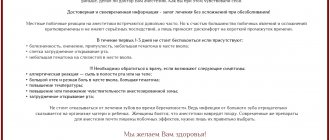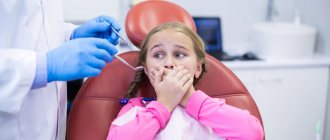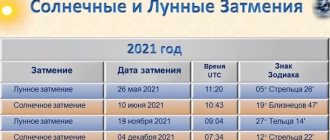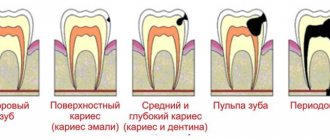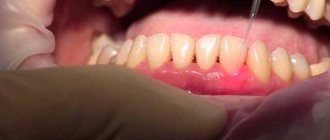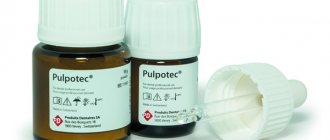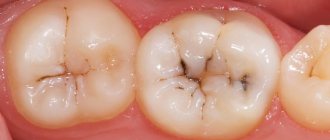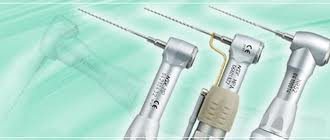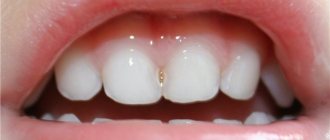Indications and contraindications
Before outlining the relative indications and contraindications for tooth extraction for children under anesthesia, let’s find out what is meant by the term “anesthesia.” Typically in medicine, this term refers to an artificially induced, reversible state of inhibition of the central nervous system, when the patient is unconscious, the muscles are relaxed, reflex activity is reduced, and sensitivity to pain disappears. In pediatric dentistry, a child is placed under anesthesia by administering intravenous drugs or using a mask to inhale an anesthetic. As a rule, removal of baby teeth, as well as permanent teeth under anesthesia, is necessary in the following situations:
- removal of several teeth;
- complex wisdom tooth removal;
- allergy to local anesthetics;
- mental and neurological diseases (epilepsy, cerebral palsy, Down syndrome);
- young age of the patient (from one year);
- child's panic fear before the procedure.
Contraindications to tooth extraction in children under anesthesia are as follows:
- acute infectious diseases;
- respiratory tract diseases;
- body weight deficiency;
- rickets;
- uncompensated heart failure;
- recent vaccination.
Before an operation to remove teeth for a child under anesthesia, be sure to consult not only a dentist, but also an anesthesiologist, as well as a pediatrician to identify all possible reasons for refusing to perform this procedure.
Make an appointment
right now!
Parastaeva Yana Vasilievna
Pediatric dentist
When is the choice between sedation and local anesthesia in favor of sedation?
The doctor’s task is to show the patient, explain to him that everything can be done under local anesthesia, work with him and prepare him for this. There are patients who want to do everything faster, but they still feel afraid, do not want to take risks and, accordingly, ask that all treatment be carried out under sedation. Therefore, in the clinics of the German Implantology Center, we carry out manipulations on therapeutic, implantological and orthopedic treatment, also under sedation, when our patients come from cities in Europe, North America, Asia and we, accordingly, have a limited period of time for the patient’s stay in Moscow.
Therefore, we provide sedation to such tourist patients every visit as part of their one-time visit to Moscow, but we carry out a large amount of work with them.
Can you be allergic to sedation?
On the topic of allergic reactions, can you be allergic to sedation? An allergy, most likely, may occur not to sedation, but to the drugs used for sedation. When preparing for sedation, it is necessary to undergo tests, the patient must meet with an anesthesiologist-reanimatologist, collect a complete medical history of the patient, his body characteristics. And here it is important that the patient also conveys the information to the doctor as much as possible and without hiding or concealing anything. And, of course, the tests should be carried out in proven certified laboratories so that everything is clear, clear, and understandable without any distortion of the data, so that the doctor can also bear full responsibility for the patient’s treatment.
Recovery after sedation
How is the patient’s rehabilitation and recovery carried out after sedation at the German Implantology Center? Each patient’s reaction may be different: some recover from sedation a little slower, others come to their senses a little faster. Within about half an hour or an hour, the patient fully regains consciousness, but he still remains for some time in the Research Center clinic under the supervision of an anesthesiologist-resuscitator. Next, a taxi is called for the patient, which takes him directly to his home, or, if the patient comes with his relatives, then, naturally, his relatives take him home.
Recovery after local anesthesia
There are special drugs that can quickly remove the feeling of anesthesia, but if the patient has had a large volume of medical work, then this should not be done, because the volume of interventions was large, and the effect of the local anesthetic can reduce the possible pain effect that can be caused by the volume work. Therefore, the patient is given a package of medical support, the drugs of which are recommended to be used for 2-3 days to a week, depending on the volume and number of manipulations performed. Dental treatment under local anesthesia is one thing, and complex operations under local anesthesia associated with bone grafting and implantation are another. Although it is worth noting that local anesthesia in surgery is now a rarity, it is being successfully replaced by sedation.
Removal of baby teeth for children under anesthesia
Loss as a result of natural resorption of the root is the best option for a child to lose his baby teeth. However, this does not always happen, and, unfortunately, the baby tooth will have to be removed in the clinic if your baby has at least one of the following factors.
- Delayed root resorption.
Removal in this situation is caused by the need to make room for the normal growth of a permanent tooth. - Inflammation of tissue due to a loose tooth.
A loose tooth does not fall out, causes discomfort to the baby and provokes inflammation of the gums. - The root has already dissolved.
The picture shows that the root is no longer there, but the tooth is still held in the socket. - Severe degree of tooth decay.
Due to advanced caries, the tooth cannot be restored. - The presence of a cyst on the root of the tooth.
Once a cyst is detected, the baby tooth should be removed as quickly as possible to avoid complications. - Beginning of permanent tooth eruption.
In such a situation, milk tooth extraction is mandatory. - Tooth trauma (if preservation and subsequent restoration is impossible).
Removal is carried out to prevent the risk of damage to the soft tissues, mucous membrane and tongue of the child. - Fistula on the gum.
A fistulous tract on the gum is a consequence of a chronic inflammatory process in the tissues surrounding the baby tooth. If it is not removed in time, the permanent tooth germ located in the bone tissue between the roots of the temporary tooth may be involved in the process. - Phlegmon, periodontitis, sinusitis.
If a baby tooth causes the development of purulent processes in the body, it must also be removed.
Removal of a baby tooth may be contraindicated in the acute stages of development of inflammatory processes in the oral cavity, during infectious diseases, or in the presence of a malignant tumor in the area where the tooth is located. In the latter case, the tooth is removed along with the tumor in a hospital. Indications for the removal of baby teeth in children under anesthesia are the same as for the extraction of permanent teeth.
How does general anesthesia affect the brain?
General anesthesia allows teeth to be removed completely painlessly , so why are patients not in a hurry to take advantage of this opportunity? It's all about rumors that spread very quickly in society. There is an opinion among ordinary people that general anesthesia negatively affects memory, leads to poor sleep and provokes headaches. Is this really true?
It is impossible to give a definite answer to this question. Yes, scientists conducted numerous clinical trials and surveyed patients, but could not reach a unanimous opinion. Most reputable doctors believe that general anesthesia during tooth extraction does not affect memory in any way. But there are also supporters of a different opinion. They believe that long-term and deep general anesthesia can lead to, albeit short-term, but still memory impairment. This is explained by temporary oxygen starvation of the brain, which can occur during deep anesthesia. It is precisely the consequences of such fasting that doctors record from time to time.
Under general anesthesia, I had several teeth removed at different times.
Previously there were no complications, but after the last procedure I encountered a side effect: amnesia. I couldn’t remember my own name for almost a day. I was scared, but everything turned out okay. Vitaly, Moscow
Actually, people are not afraid of the anesthesia itself, but of the possible consequences, which can be unpredictable.
How is tooth extraction performed for children under general anesthesia?
Tooth extraction for children under general anesthesia can be divided into 4 stages.
- Preparation for the procedure
Before tooth extraction under anesthesia, the child must visit a pediatrician to undergo a comprehensive examination of the body, followed by all necessary tests and an ECG. The baby should stop eating 6 hours before the procedure itself, and 4 hours before the start of the procedure, stop drinking liquids. - Anesthesia
The child is put to sleep using an inhalational anesthetic administered through a mask or an intravenous injection. At the same time, the anesthesiologist monitors his condition at all stages of the surgical operation. - Tooth extraction
The procedure itself for removing teeth for children under general anesthesia consists of the following manipulations.
- The doctor places forceps on the crown of the tooth and moves them along its perimeter.
- He then places the forceps on the tooth and dislocates it.
- Next, the doctor removes the tooth from the hole and checks whether all the roots have been removed.
- The tooth socket is pressed with a sterile gauze swab.
- If necessary, X-ray diagnostics are performed.
- Rehabilitation
After waking up, it is better for the child to stay in the clinic for several hours for medical monitoring of his condition. After anesthesia, your baby should be fed light foods, such as yogurt or broth. Do not give your child any medications unless they have been prescribed by your doctor. If you strictly follow all the recommendations of specialists, the rehabilitation period should pass safely and without side effects.
Traditionally, clinics use two main types of anesthesia: inhalation (mask) and intravenous. During inhalation anesthesia, substances that induce sleep enter the child’s body through the respiratory tract. As a rule, these are halogen-containing gases: Sevoran, Foran, etc. This method is considered the most comfortable for a small patient, because the child quickly falls asleep and does not experience discomfort when waking up. During intravenous anesthesia, sleep medications (propofol or benzodiazepines) are released into the bloodstream by injection.
Types of sedation in dentistry
- deep sedation is a condition in which the patient is put into a state of sleep and is unable to follow the doctor’s instructions. Deep sedation is complemented by local anesthesia, since it does not lead to complete shutdown of pain sensitivity. It is similar to anesthesia, therefore it has all its inherent disadvantages and limitations.
- superficial sedation is a condition in which the patient does not lose the ability to follow the doctor’s instructions and maintains normal breathing during treatment. Since sedation promotes deep relaxation, the patient has only a small memory of the procedure.
Is it dangerous to remove teeth in children under anesthesia?
If during the examination of a child at the stage of preparation for tooth extraction under anesthesia, contraindications to the use of general anesthesia are revealed, then not a single doctor will insist on this. In cases where the use of anesthesia is justified and supported by test results, there should be no complications. In addition, when talking about the potential risks of tooth extraction for children under general anesthesia, it is important to draw the attention of parents to a careful choice of clinic and professionals, on whom the successful completion of the operation directly depends.
Disadvantages of general anesthesia
Doctors cannot perform general anesthesia in the above cases, since there are serious risks of complications. For this reason, doctors insist that the patient undergo at least an ECG and laboratory tests.
It should also be understood that deep anesthesia is a serious effect on the body , which can cause various side effects. The advertising brochures of most dental clinics do not mention this. The most common side effects after general anesthesia are:
- Increased blood pressure.
- Tachycardia.
- Convulsive reactions.
- Bronchial spasms.
- Spasms of the larynx.
- Vomit.
- Temporary amnesia.
These are not all the negative aspects of general anesthesia.
Before the general anesthesia procedure itself, the patient must undergo preoperative preparation . He can neither drink nor eat. After the operation, he will have to follow rules that will make life somewhat more difficult.
Let us repeat,
tooth extraction under general anesthesia is only possible if the clinic has a well-coordinated team of doctors: dentists, anesthesiologists, resuscitators, and nurses.
In addition, the clinic must have all the necessary equipment. All this increases the prices for deep anesthesia. According to dentists, general anesthesia makes the doctor’s work more difficult for the following reasons:
- The endotracheal tube makes it difficult for the dentist to access the operating area.
- The patient, while in a narcotic sleep, is unable to follow the dentist’s instructions. This forces the doctor to constantly change positions while working in order to reduce the load on the muscles, which quickly tires. Naturally, fatigue does not improve the quality of a dentist’s work.
If the patient is aware of the difficulties listed above , then this can significantly increase his anxiety. Therefore, it is unreasonable to assume that general anesthesia will reduce fear of dental surgery. It can relieve pain, but not fear.
Preparing for the procedure under anesthesia
The list of examinations before prosthetics under general anesthesia is not much different from providing data to the surgeon before surgery. It looks like this:
- checking the continuity of heart function using an ECG;
- a detailed blood test with the recent date of blood donation;
- data on the patient’s absence of hepatitis and HIV.
Patients who, even after reaching the age of 50, do not complain about their health are at particular risk. Anesthesiologists do not welcome arrogance, so they recommend that their patients visit a cardiologist and therapist before installing a dental gap-filling structure in the oral cavity.
